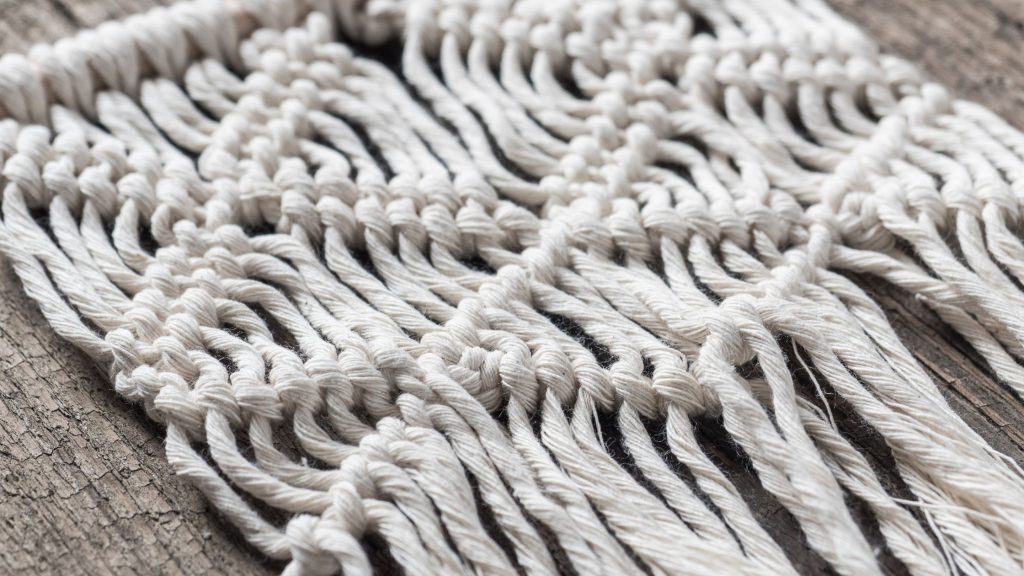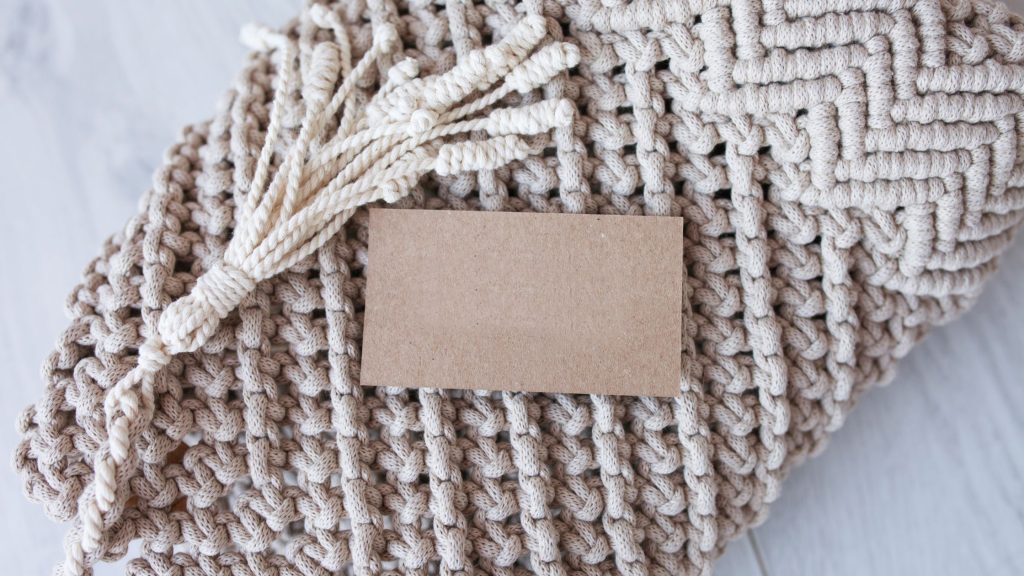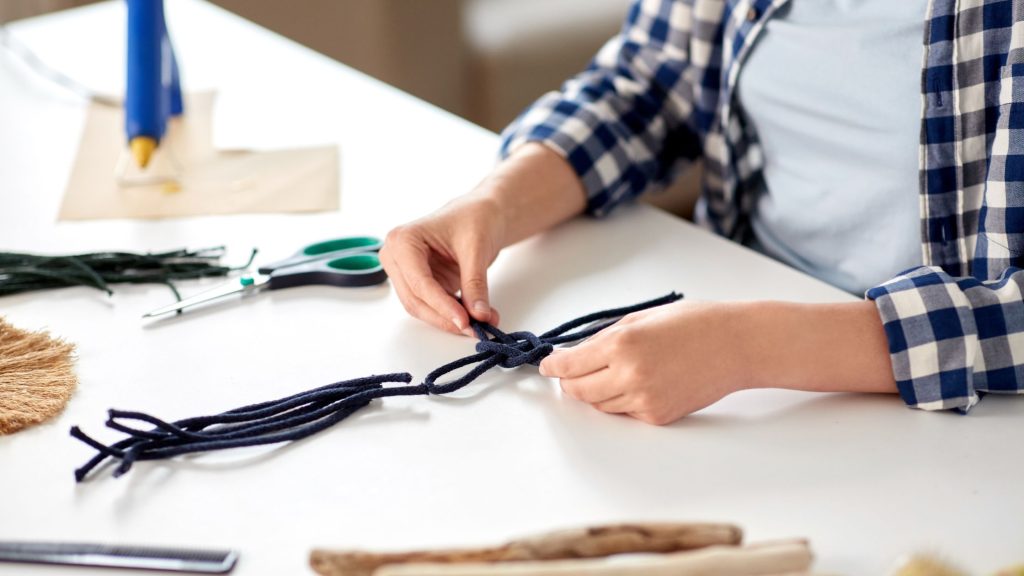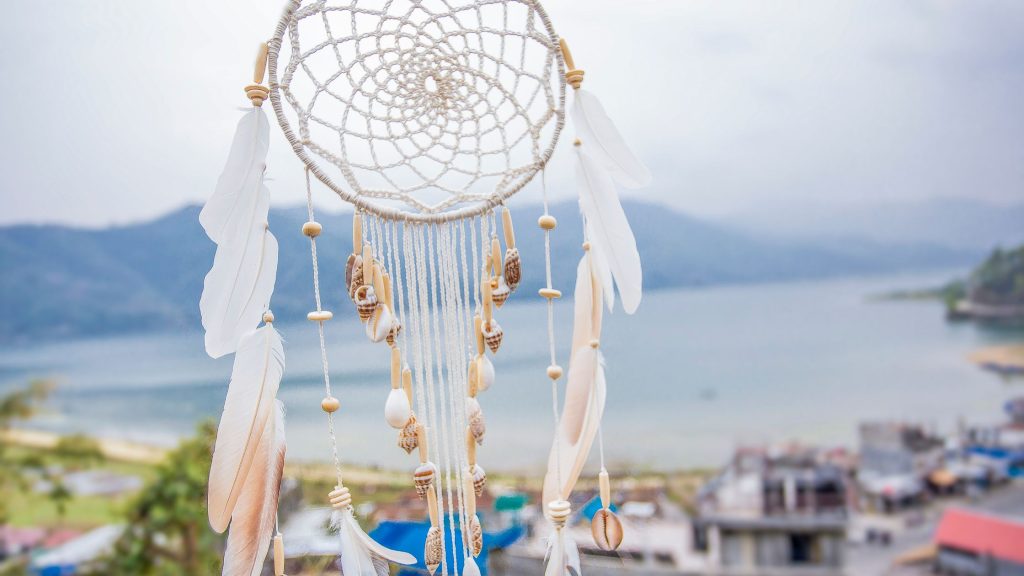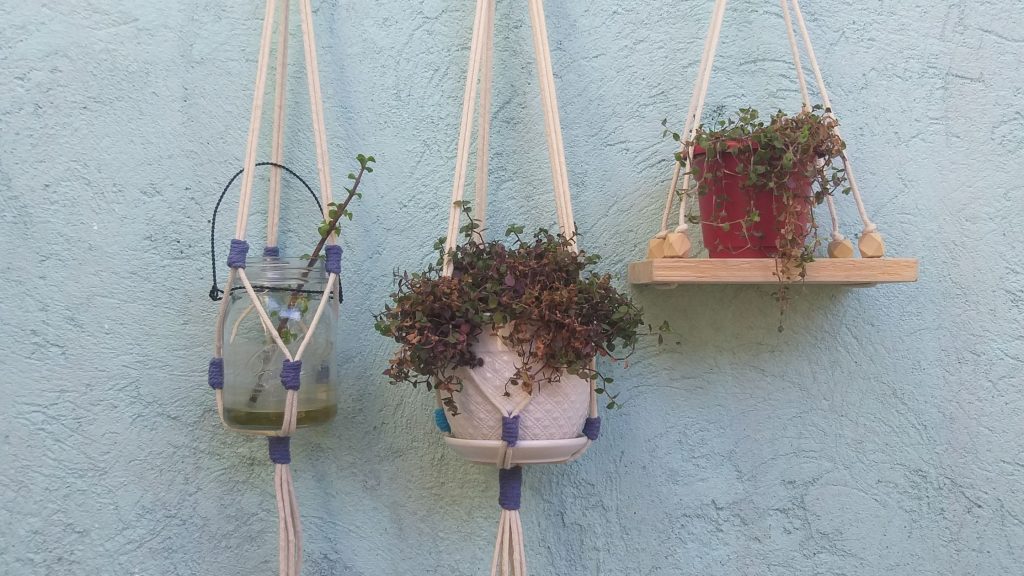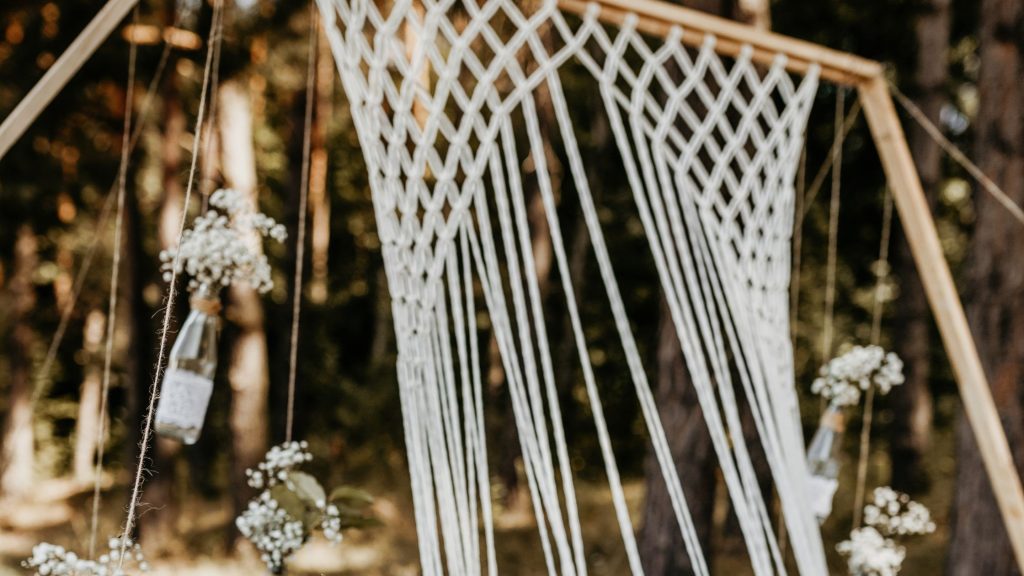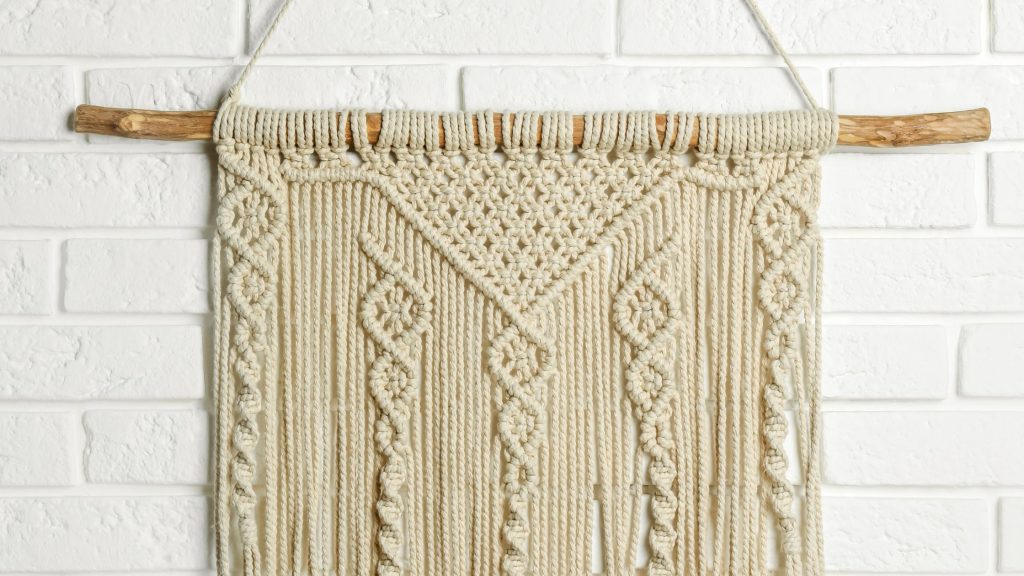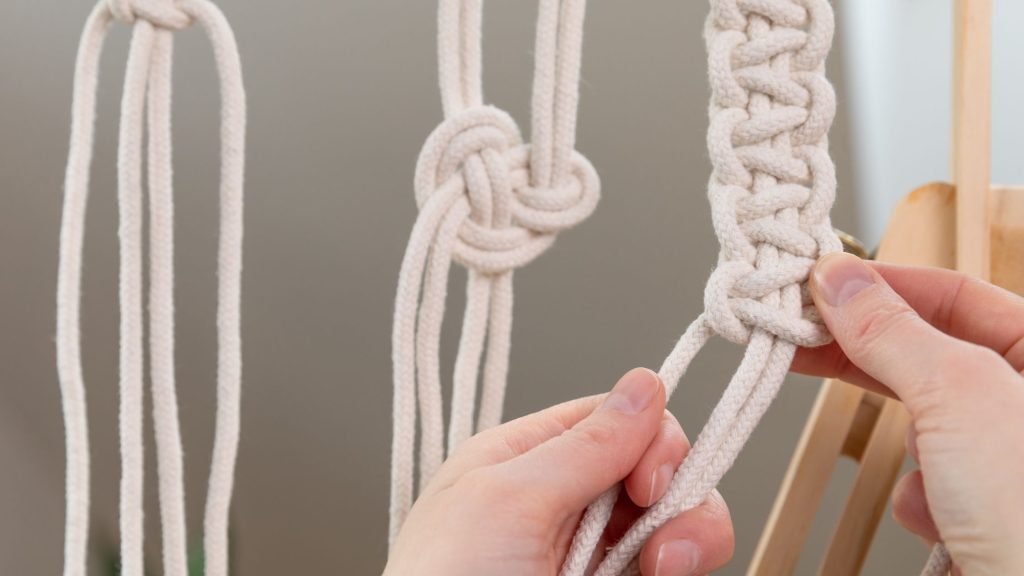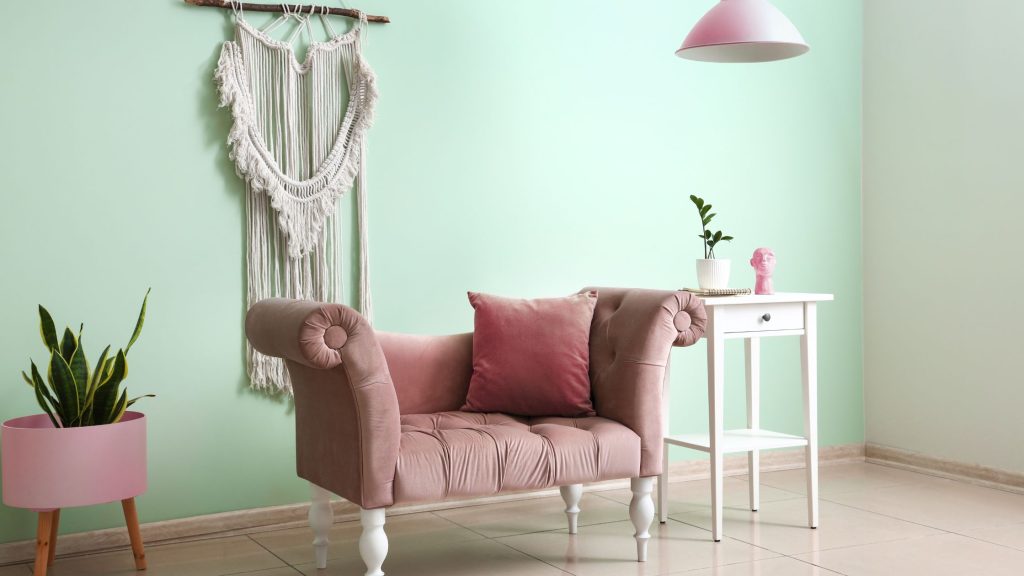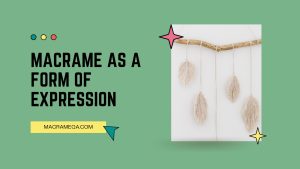Macrame, once a humble craft of knotting ropes together, underwent a remarkable transformation in the 20th century, emerging as a revered art form. From its ancient origins to its modern resurgence, macrame has evolved and captivated artists and enthusiasts worldwide. The intricate patterns and delicate designs created through this technique have elevated macrame from a functional skill to an expressive and creative medium. Exploring the history and cultural significance of macrame’s evolution reveals the profound impact it has had on the art world in the last century. Embark on a journey through time as you discover the mesmerizing story of how macrame transform into an art form.
Origins of Macrame
Early uses of macrame
Macrame, the art of decorative knotting, has a rich history that dates back thousands of years. Its origins can be traced to ancient Babylon and Assyria, where evidence of macrame was found in the form of wall hangings and clothing adornments. The craft then spread to other regions, such as North Africa, Persia, and China, where it was utilized for both practical and decorative purposes.
In the early days, macrame was primarily used by sailors to create intricate knots that secured items on ships. These knots were not only functional but also served as a form of identification for different seafaring communities. Over time, the craft evolved to incorporate more intricate designs and patterns, reflecting the cultural influences of the regions where it was practiced.
Spread to different cultures
As trade routes expanded, macrame made its way to different parts of the world. In Europe, macrame gained popularity during the Renaissance period, where it was used to create elaborate lace-like patterns for clothing and home decor. It was during this time that macrame techniques began to diverge, with different regions adopting their unique styles and designs.
In the Middle East and North Africa, macrame became an integral part of the Islamic art tradition. It was used to create elaborate decorative patterns for mosques and palaces, showcasing the intricate craftsmanship of the region. Macrame also found its way to South America through Spanish colonization, where it became popular among indigenous communities who added their flair to the craft.
Traditional macrame techniques
Traditional macrame techniques involve using various knots, such as square knots, half hitch knots, and lark’s head knots, to create a range of patterns and textures. These techniques often require the use of natural fibers, such as cotton, hemp, or jute, which were readily available in the past.
The beauty of traditional macrame lies in its simplicity and versatility. With just a few basic knots, artisans can create intricate designs and patterns that are both functional and visually appealing. Traditional macrame pieces often feature intricate fringes, tassels, and beadwork, adding an extra touch of elegance to the finished product.
Macrame in the 20th Century
Revival of macrame
After centuries of being a popular craft, macrame experienced a revival in the 20th century. This resurgence can be attributed to several factors, including a growing interest in handmade crafts and a desire to reconnect with traditional art forms. Macrame became a way for people to express their creativity and create unique, one-of-a-kind pieces.
The revival of macrame can also be attributed to the counterculture movement of the 1960s and 1970s. During this time, macrame was embraced as a form of self-expression and became synonymous with the bohemian lifestyle. It was often seen as a way to rebel against the mainstream culture and embrace alternative forms of art and creativity.
Macrame in fashion
In the 20th century, macrame also found its way into the world of fashion. Designers began incorporating macrame elements into clothing, accessories, and jewelry, adding a touch of bohemian chic to their collections. Macrame dresses, tops, and bags became popular, featuring intricate knotting techniques and unique patterns.
Macrame jewelry also became a fashionable trend, with artisans creating stunning necklaces, bracelets, and earrings using macrame knots and beads. These pieces were not only visually appealing but also showcased the artisan’s skill and attention to detail.
Macrame as a decorative art form
In addition to fashion, macrame also became highly popular as a decorative art form. Wall hangings, plant hangers, and curtains adorned many homes, adding a touch of bohemian charm and texture to interior spaces. Macrame tapestries often featured complex patterns, incorporating different knotting techniques and fibers to create stunning works of art.
Macrame artists started experimenting with different materials, introducing vibrant colors and unique textures to their creations. The versatility of macrame allowed artists to push boundaries and create innovative designs that blurred the line between craft and fine art.
Macrame Movements and Influences
Art Nouveau influence
One of the major influences on macrame in the 20th century was the Art Nouveau movement. Art Nouveau, which emerged in the late 19th and early 20th centuries, was known for its emphasis on organic forms and intricate patterns. Macrame, with its natural fibers and botanical-inspired motifs, seamlessly fit into this artistic movement.
Artists and designers drew inspiration from the flowing lines and delicate curves of Art Nouveau, incorporating them into their macrame designs. The result was a fusion of two art forms, with macrame breathing new life into the Art Nouveau aesthetic. Macrame pieces featured floral motifs, flowing vines, and soft, undulating patterns that captured the essence of nature.
Macrame in the Arts and Crafts Movement
The Arts and Crafts Movement, which emerged in the late 19th century, also played a significant role in the transformation of macrame into an art form in the 20th century. This movement, fueled by the Industrial Revolution, sought to revive traditional craftsmanship and promote the value of handmade objects.
Macrame, with its rich history and artisanal techniques, perfectly aligned with the ideals of the Arts and Crafts Movement. Artists and designers began creating macrame pieces that showcased the beauty and intricacy of handmade craftsmanship. These pieces often featured meticulous attention to detail and reflected the influence of various art forms, such as painting, sculpture, and architecture.
Influence of American folk art
American folk art also left its mark on the evolution of macrame in the 20th century. Folk art, with its emphasis on simplicity, functionality, and storytelling, resonated with the traditional and rustic nature of macrame. Artists and artisans drew inspiration from folk art traditions, incorporating whimsical motifs, folktales, and cultural symbols into their macrame creations.
This fusion of macrame with American folk art resulted in playful and expressive pieces that captured the imagination. Macrame wall hangings, tapestries, and sculptures became popular forms of folk art, showcasing the artistic talent and storytelling abilities of the creators.
Macrame Innovations and Techniques
New materials and tools
In the 20th century, macrame artists and enthusiasts began experimenting with new materials and tools, pushing the boundaries of the craft. Synthetic fibers, such as nylon and polyester, were introduced, offering a wider range of colors and textures. These materials allowed for greater creativity and added durability to macrame pieces.
Innovative tools, such as macrame boards and special knotting needles, were also developed, making it easier and more efficient to create intricate macrame designs. These tools allowed artists to work with more precision and speed, opening up new possibilities for the craft.
Emphasis on creative designs
With the revival of macrame in the 20th century, there was a growing emphasis on creative designs and pushing the boundaries of what was traditionally considered macrame. Artists began experimenting with unconventional forms, incorporating sculptural elements and mixed media into their macrame pieces.
Macrame artists started integrating other artistic techniques, such as dyeing, painting, and embroidery, into their works, creating unique and innovative pieces. These creative designs showcased the evolution of macrame as an art form, blurring the lines between craft, fine art, and contemporary design.
Macrame in modern art
The 20th century witnessed the integration of macrame into the world of modern art. Macrame artists began exhibiting their works in art galleries and museums, alongside other contemporary art forms. Macrame installations, sculptures, and mixed media pieces challenged traditional notions of what constituted art and brought macrame into the realm of fine art.
Macrame artists experimented with scale, creating large-scale installations that transformed spaces and engaged viewers in immersive experiences. These installations often featured innovative knotting techniques, unconventional materials, and thought-provoking concepts, showcasing the versatility and artistic potential of macrame.
Artists and Designers in Macrame
Pioneers of macrame as an art form
Several artists and designers played a pivotal role in elevating macrame to the status of an art form in the 20th century. One such pioneer was Ruth Asawa, an American sculptor known for her intricate, wire-based sculptures. Asawa incorporated macrame techniques into her sculptures, creating ethereal and delicate forms that defied conventional notions of sculpture.
Other notable artists include Olga de Amaral, who fused traditional Colombian techniques with modern aesthetics to create innovative macrame tapestries, and Kay Sekimachi, who combined traditional Japanese weaving techniques with macrame to create intricate and delicate fiber art.
Innovative macrame artists
In addition to the pioneers, there have been numerous innovative macrame artists who have pushed the boundaries of the craft in the 20th century. Some notable names include Françoise Grossen, who introduced large-scale macrame sculptures, adding a three-dimensional aspect to the craft, and Sheila Hicks, who incorporated macrame into her textile art, exploring the intersection of tradition and modernity.
These artists and many others contributed to the evolution of macrame as an art form, redefining what was possible with knots and fibers. Their innovative work continues to inspire and influence contemporary macrame artists around the world.
Macrame artists in the contemporary art scene
Today, macrame continues to thrive as an art form, with a new wave of artists and designers pushing the boundaries of the craft. Contemporary macrame artists are exploring new materials, techniques, and concepts, creating pieces that blur the lines between art, design, and craft.
Artists like Sally England and Emily Katz have gained popularity for their unique macrame wall hangings and installations, incorporating elements of bohemian style and modern design. These artists, along with many others, are using macrame as a medium for self-expression, exploring themes of identity, sustainability, and the human connection to nature.
Macrame in the Home
Macrame as wall hangings
One of the most popular uses of macrame in the home is as wall hangings. Macrame wall hangings can range from small, intricate pieces to large, statement-making tapestries. These pieces add texture and visual interest to any space, creating a focal point and adding a touch of warmth and bohemian charm.
Macrame wall hangings come in a variety of styles and designs, ranging from simple geometric patterns to elaborate, nature-inspired motifs. The versatility of macrame allows homeowners to find a piece that complements their style and adds a personal touch to their space.
Macrame plant hangers
Another popular application of macrame in the home is as a plant hanger. Macrame plant hangers provide a stylish and space-saving way to display indoor plants, adding a touch of greenery and life to any room. These hangers are typically made of sturdy cords or ropes, knotted in various macrame patterns to create a secure and decorative support for pots or baskets.
Macrame plant hangers offer a unique and creative way to showcase plants, allowing them to be suspended at different heights and angles. They can be hung from ceilings, mounted on walls, or displayed on stands, adding a dynamic and visually appealing element to any space.
Macrame in interior design
Macrame has also found its way into interior design, with designers and homeowners incorporating macrame elements into furniture, lighting, and accessories. Macrame curtains, lampshades, and room dividers can add a soft and textural element to a room, creating a cozy and bohemian atmosphere.
Macrame rugs and pillows are another popular choice for those looking to incorporate the craft into their interior design. These pieces add warmth and visual interest to a space, creating a welcoming and comfortable ambiance.
Macrame in Public Spaces
Macrame installations in public spaces
As macrame has evolved into an art form, it has found its way into public spaces through large-scale installations. Macrame artists and designers have created stunning pieces that transform public spaces, engaging viewers and inviting them to interact with the artwork.
From suspended sculptures in parks to intricate macrame archways in urban plazas, these installations bring a sense of wonder and beauty to public spaces. They showcase the versatility of macrame as an art form and create opportunities for people to connect with art in unexpected places.
Macrame in urban decorations
The beauty of macrame is not limited to nature-inspired installations. In urban environments, macrame has been used to decorate public spaces, adding a touch of color and texture to cityscapes. From lamp posts adorned with macrame sleeves to street furniture embellished with macrame coverings, these decorative elements help create a sense of community and beauty in city environments.
Macrame urban decorations offer a unique and whimsical contrast to the concrete and steel of the urban landscape. They can transform ordinary objects into extraordinary works of art, inviting people to pause, appreciate their surroundings, and perhaps even inspire a sense of wonder and creativity.
Macrame in public art
Macrame has also found its way into contemporary public art, with artists using the craft to explore social issues, cultural heritage, and the human connection to nature. These macrame installations often incorporate elements of storytelling, symbolism, and community engagement.
Public art installations may combine macrame with other artistic mediums, such as photography, video, and performance, creating multi-dimensional experiences for viewers. These works of art provoke thought, spark conversations, and foster a sense of connection and shared experience among communities.
Macrame and the DIY Movement
Macrame in DIY craft culture
In recent years, macrame has experienced a resurgence in popularity within the DIY craft culture. Websites, blogs, and social media platforms have become platforms for sharing macrame tutorials, patterns, and inspiration, making it accessible to a wide audience.
The DIY movement has allowed individuals to explore their creativity and learn macrame at their own pace. Macrame kits, which include all the necessary materials and instructions, have also made it easier for beginners to get started and create their macrame pieces.
Macrame tutorials and resources
The rise of the DIY movement has led to an abundance of macrame tutorials and resources available online. From basic knotting techniques to complex patterns, enthusiasts can find step-by-step instructions and video tutorials that guide them through the process of creating their macrame masterpieces.
Websites, YouTube channels, and social media accounts dedicated to macrame provide a platform for sharing tips, tricks, and inspiration. These resources not only help beginners learn the craft but also inspire experienced macrame artists to push their creative boundaries and explore new techniques.
Social media influence on macrame popularity
Social media platforms, such as Instagram and Pinterest, have played a significant role in the popularity of macrame in recent years. Artists, designers, and enthusiasts showcase their macrame creations, garnering attention and inspiring others to try their hand at the craft.
The visual nature of social media platforms allows for the easy sharing of macrame designs and ideas, creating a global community of macrame lovers. Social media has become a platform for discovering new patterns, connecting with like-minded individuals, and showcasing one’s macrame creations.
Macrame as a Form of Self-Expression
Exploration of personal creativity
Macrame has long been recognized as a medium for personal expression and creativity. In the 20th century, this aspect of macrame was further emphasized as artists and designers pushed the boundaries of the craft, experimenting with new techniques, materials, and concepts.
Individuals who practice macrame today often find joy and fulfillment in exploring their own creativity. The process of selecting knots, fibers, and colors, and combining them to create unique designs, allows for a personal and intimate connection with the craft.
Macrame as a therapeutic practice
Macrame also offers therapeutic benefits to those who engage in the craft. The repetitive nature of knotting can induce a state of relaxation and mindfulness, similar to that of meditation. The tactile experience of working with fibers and creating something beautiful with one’s hands can be soothing and provide a sense of accomplishment.
Many individuals turn to macrame as a way to reduce stress, unwind, and quiet the mind. It provides a creative outlet for self-expression and serves as a form of mental and emotional self-care.
Macrame as an outlet for self-expression
Macrame allows individuals to express their style and taste in their homes, clothing, and accessories. Through the choice of patterns, colors, and materials, individuals can create pieces that reflect their unique identity and personality.
Macrame artists often incorporate symbols, motifs, and cultural references into their designs, creating pieces that tell a story or evoke a specific emotion. This ability to infuse personal meaning into macrame adds depth and dimension to the craft, making it a powerful form of self-expression.
Contemporary Macrame Trends
Innovation in macrame techniques
The world of macrame is continuously evolving, with artists and designers pushing the boundaries of the craft through innovative techniques. Knots that were once seen as traditional are now being reimagined and combined in new ways, creating unique textures and patterns.
Artists are experimenting with knotting techniques, such as macrame lace, micro-macrame, and free-form macrame, to create intricate and delicate designs. They are also incorporating macrame with other textile techniques, such as weaving and embroidery, to create hybrid art forms that challenge traditional boundaries.
Integration of macrame with other art forms
Contemporary macrame artists are embracing interdisciplinary approaches, integrating macrame with other art forms to create hybrid works of art. They are collaborating with painters, sculptors, and ceramicists to create mixed-media pieces that explore the intersection of various artistic mediums.
Macrame is being combined with painting to create macrame canvases, with sculpture to create macrame sculptures, and with ceramics to create macrame vessels. These collaborations result in artworks that blur the lines between craft, fine art, and contemporary design, showcasing the endless possibilities of macrame as a medium of artistic expression.
Macrame as sustainable art
In recent years, there has been a growing focus on sustainability and eco-consciousness in the art world. Macrame, with its emphasis on natural fibers and handmade craftsmanship, aligns well with this movement.
Contemporary macrame artists are increasingly using sustainable materials, such as organic cotton, recycled fibers, and plant-based dyes, in their creations. They are also exploring environmentally friendly practices, such as upcycling and zero-waste techniques, to minimize the environmental impact of their work.
Macrame as sustainable art not only promotes conscious consumption but also celebrates the beauty of the natural world and highlights the importance of preserving it for future generations.
Conclusion
In conclusion, macrame has come a long way from its humble beginnings as a practical craft used by sailors. In the 20th century, it went through a transformation that elevated it to the status of an art form. From its revival in the counterculture movement to its integration into contemporary art and design, macrame has captured the imagination of artists, designers, and enthusiasts around the world. With its rich history, versatility, and ability to evoke personal expression and creativity, macrame continues to evolve and thrive in the modern era. Whether it’s in the home, public spaces, or the art world, macrame has become a medium for storytelling, self-expression, and sustainable art.



